ASUS VG236H 23-inch 3D Display Review: 120Hz is the Future
by Brian Klug on August 7, 2010 2:48 AM ESTLegacy Titles, 'Good' Games: Work with 3D, but hardly Flawless
The most common problem in older titles was that crosshairs rendered at screen depth. Two titles where this really stuck out were Battlefield Bad Company 2, and to a lesser extent games running Valve’s Source engine.
To be fair, NVIDIA offers the ability to enable a 3D Laser Sight for certain games, which replaces the distracting normal cursor in some games.
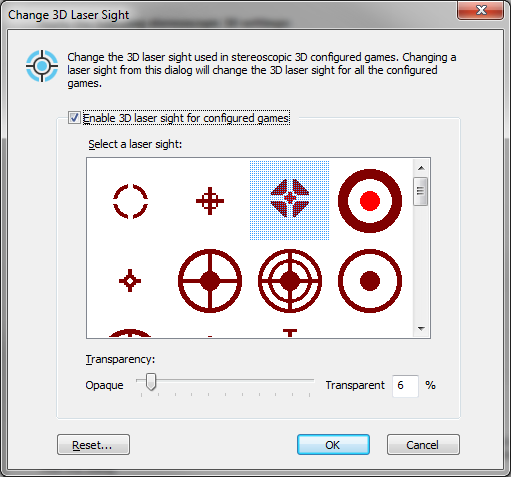
In general, it’s distracting when things are being rendered at screen depth. A good example is how in games like TF2 or DOD:S, kill notifications in the top right, chat text, weapon selection, and players names all render in 2D at screen depth. You can get used to it, but it looks out of place. There’s also the occasional bit of content that just isn’t 3D as well.
When you fire up a title, NVIDIA gives you an overlay in the bottom right with information about the game’s compatibility, as well as what settings should be enabled or disabled for optimal 3D quality. The interesting bit about 3D is that you can really get a feel for when game engines are doing hackety things like rendering HDR at screen depth instead of in 3D - all these little flaws show in 3D mode on older titles.
The other problem is simple - hold a weapon up to a wall, and you’ll get the perception that your gun is going into the wall, which is actually closer to you. This is that age old clipping problem rearing its ugly head, now in 3D. It’s impossibly difficult to describe, but weapons will appear to dive into materials that they can’t. In the past, with 2D, this wasn’t a problem, but the result just looks off in 3D.
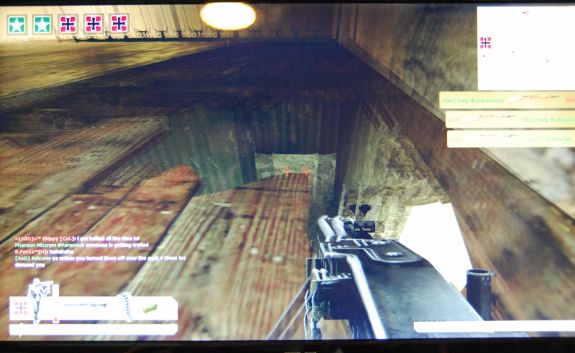
See how the MG42 goes into the wood? It's even weirder when it appears to have depth.
The reality is that Excellent and Good rated titles work very well, but just haven’t been designed for 3D. The result is that while the game content is 3D and looks beautiful, things like menus, crosshairs, and information all on the edges makes the experience a bit jarring.
NVIDIA 3D Vision Ready: Play These in 3D
But what about NVIDIA’s 3D Vision Ready titles? New games designed for 3D? I decided to try a little experiment. I decided I would play Metro 2033 through, beginning to end, entirely in 3D. I would then repeat the same thing in 2D and see what I thought.
I want a 120Hz 3D monitor and kit of my own now.
The difference in the 3D experience here compared to ‘good’ or even ‘excellent’ titles is mind-blowing. What makes Metro 2033 a particularly good example is how everything is 3D. The initial menu screen is 3D, everything is 3D. There isn’t a jarring difference between content that obviously was never intended to be viewed in 3D and the rest of the game - in Metro 2033 it just works.
Things like dust are entirely volumetric, not just 2D speckles. There’s depth and detail on weapons, objects, and textures. The game is just completely immersive in a different way. It’s difficult to explain just how much more engaging this game feels in 3D compared to 2D. Suffice it to say things like the very final level where you’re running on floating platforms or in a maze away from the dark ones, or up in Ostankino tower, are amazingly different and trippy. Honestly, Metro 2033 in 3D is close to if not entirely NVIDIA 3D Vision’s killer app. 3D vision does exact a considerable price on framerate though. With Metro 2033 I settled on 1680x1050 on High with the DX10 codepath to get playable framerates. Pushing the GTX 470 much further reduced FPS too much.
The only caveat which remains is the same as found in other 3D systems - you do lose some brightness, and you’ve got to wear glasses, which is annoying if you already wear glasses to correct your vision.
As I’ll show in a second, the VG236 is indeed a very bright display, but you really need every last nit to keep things lit up when in 3D mode. Just by nature of using shutter glasses, everything gets dimmer. I wouldn’t say it was a problem when playing 3D games, but I did increase gamma in Metro 2033 just a bit because it’s such a dark game most of the time.
For me, the bottom line is this. Virtually every game is going to benefit from a 120Hz panel because you won’t get visible tearing until your framerate is over 120 fps. In older games where even on maximum everything you’re well over 100, it’s nice to actually see some of those frames. To that extent, games do appear smoother to me visually. For 3D content, 3D Vision Ready titles are a whole different level of immersion compared to older titles that - while they do work - have distracting 2D elements. With time, hopefully more games will be developed with 3D in mind and lose the distracting bits that otherwise diminish the experience.


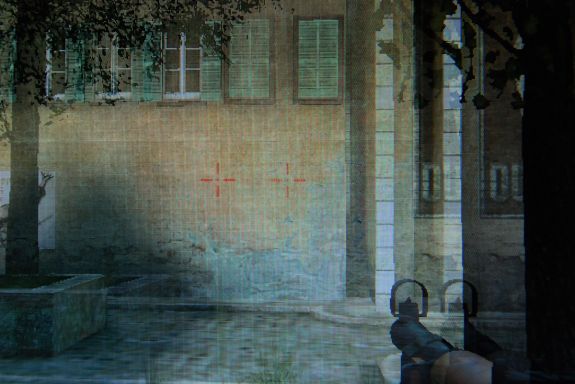
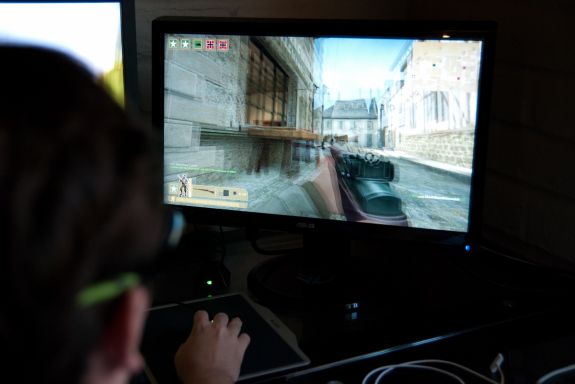
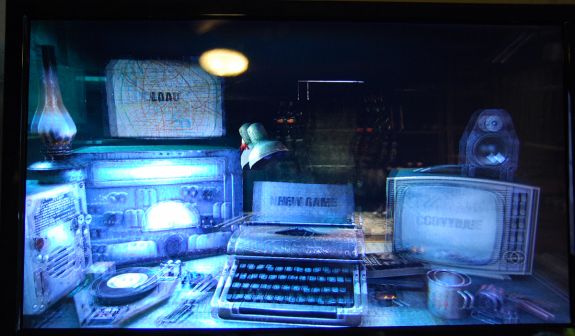
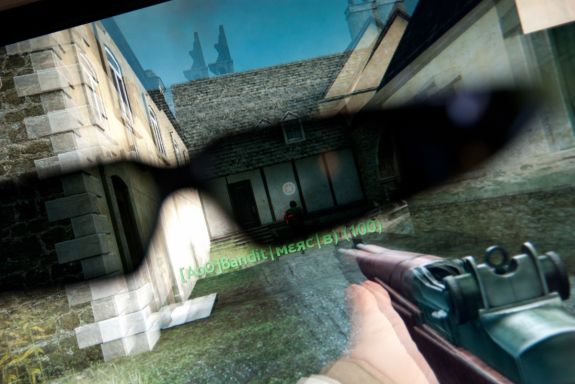








121 Comments
View All Comments
Seikent - Monday, August 9, 2010 - link
No, when the monitor is using 60hz, it is like a normal lcd monitor (tested with other 120hz monitor).sleepeeg3 - Saturday, August 7, 2010 - link
TN+Film is 256k colors. Have fun stumbling around in a pitch black room at 120fps, because the display can not render enough gray levels to show any detail.The sooner people stop settling for this inferior technology, the sooner prices will drop on IPS panels.
Quit buying TN+Film!
dingetje - Sunday, August 8, 2010 - link
yep, we need more picky buyers!!....and well, that's not gonna happen...that's why we now have 1920X1080 panels instead of 16:10 displays :(DarkUltra - Sunday, August 8, 2010 - link
Don't sell us short. Keep enlightening people, and before you know it there will be a market for excellence just as there is a market for high quality motherboards. You know, things like 24 phase power, 2oz Copper layer, Solid Capacitors, Ferrite core chokes, dual bios etc.Heatlesssun - Sunday, August 8, 2010 - link
Would be nice to have a 120Hz IPS monitor to buy.seapeople - Sunday, August 8, 2010 - link
Have fun paying 2x as much for an IPS monitor to appease your color sense. People have obviously chosen price over quality here, it's not necessarily ignorance. There are plenty of $600+ IPS panels for you to buy, and I'm sure in a while they'll bring out an $800 120h IPS panel for you to buy six of in your Eyefinity set up. But for the rest of us there's something called money that constitutes an important part of purchase decisions.I always get the feeling that the anti TN-monitor freaks are somewhat similar to the Apple fanboi's... "But my $3000 Macbook Pro is just so much nicer than that similar functionality $1500 Windows Laptop! Everything looks better! The quality! The smoothness! I don't understand all you Windows lemmings who settle for such crap!"
AnnonymousCoward - Monday, August 9, 2010 - link
$400 more for my window into the world, which I look at every day, for the next 5 years, is well worth it. You can drive your $12000 car, and I'll drive a $11600 and enjoy a much better screen. And no, I don't like Apple.Patrick Wolf - Monday, August 9, 2010 - link
Your Apple fanboi comparison is laughable. They aren't remotely similar. You can put a good IPS next to a "good" TN and see an immediate and obvious difference. Some people are willing to pay for that difference, some aren't. IPS people choose quality. Peried.Zap - Monday, August 9, 2010 - link
Sure, put them next to each other and you can probably see a difference, but can the average Joe see a difference if they weren't next to each other? I have a number of LCD monitors in my household, including TN (Acer Ferrari), MVA (Soyo Topaz) and IPS (Dell 2005FPW). My primary use is gaming and web browsing, and I don't notice much difference past the size, which while engrossed in games I don't notice after a while but I do notice the extra pixels of the 24" for stuff like web browsing. Beyond that, they all look fine to me. Of course I'm not actively looking for flaws, but I'd be willing to wager that neither are most computer users.Now, I do notice some difference between really old LCD monitors and newer ones. I don't know if the picture degrades over time or if panel tech has improved, but if you want to do those side-by-side comparisons with TN panels, try a new (and decent quality) TN based monitor next to some 8 year old LCD of any kind, and see which one looks better (outside of viewing angle). I mentioned "decent quality" because you can get two different monitor models/brands using the exact same panel and one may have a better looking picture than the other due to factors beyond which panel they use.
Pastuch - Monday, August 9, 2010 - link
Fantastic post ZAP. I couldn't agree more. TN has made huge strides in picture quality in the last couple years and the new E-IPS displays don't compare to S-IPS AT ALL. Not even close.Asus VW246 vs Dell U2311 vs NEC EA231Wm vs Dell 2005fpw vs HP2475
In the last year I have purchased an Asus VW246h (TN), NEC EA231WMi (E-IPS) and a Dell U2311 (E-IPS). I also own a Dell 2005FPW (S-IPS) and I use an HP 2475 (S-IPS) at work.
I have 20/15 vision in both eyes and I'm a picture quality snob. I wish I didn't love video games because finding a monitor that is good for everything is impossible.
Note: I have not calibrated any of the displays tested here. I am ordering an X-Rite I1 Display LT soon.
Picture Quality comparisons:
Asus TN vs Dell and NEC IPS:
I prefer the blacks and contrast on the Asus VW246H (TN) compared to the Dell and NEC E-IPS displays. The Asus has a more life-like 3d image and I was blown away by it immediately. It's easily the best picture quality I have seen on a TN monitor (Yes it still sucks compared to an S-IPS). The E-IPS have good color accuracy and viewing angles. The Anti-glare coating on the NEC was HORRIBLE, the Dell has a much less distracting AG coating. I found very minimal back light bleed on any of the new monitors I have purchased, this was a welcomed surprise. The E-IPS definitely do have color uniformity issues from left to right. The TN does not have that problem. The TN is also more responsive in FPS games and has less ghosting. The difference between the Dell and the Asus was small though (Re: Ghosting). I have yet to try a 120hz monitor so I can't give an opinion there. I honestly think E-IPS is a disappointment and a high quality TN panel can match and/or beat it's performance despite the inherent limitations. It seems like all the new monitors coming out in 2010 have made big improvements in reducing input lag which I think is terrific. Ghosting I can live with but Input lag is just awful. I will be returning the Dell U2311 (Already returned the NEC) even though it has a great stand and excellent user interface because I like the picture quality of the less expensive Asus TN more. If you're hell bent on getting an E-IPS display I would definitely buy the Dell over the NEC. The new 27 inch Asus VE276Q looks really interesting. I would probably buy that or the Dell U2410 depending on your priorities. I'm assuming the Asus VE276Q has a low input lag based on the fact that most Asus monitors have VERY low input lag.
Dell S-IPS vs. HP 2475 vs. E-IPS and Modern TNs.
My much older Dell 2005FPW has good blacks, great contrast and solid color accuracy but it's definitely showing it's age when compared to the modern TNs. When I bought the 2005FPW it absolutely destroyed any TN available at the time but that performance advantage is gone. The Asus TN is comparable to my Dell 2005FPW in every way but it's larger and has less ghosting and less input lag. The S-IPS I use at work is light-years ahead of the E-IPS displays and the Asus TN. The colors, contrast, blacks, and depth are amazing but the response time on my S-IPS is awful which is no surprise. I found both the Dell and the Nec to look very flat (The illusion of 3d) compared to any PVA, S-IPS or even the Asus TN I own. A very good friend of mine has the Dell U2410 and it looks outstanding. Blu-rays are a joy to see on that display. It has a real 3D look to the picture.
Ergonomics:
Dell owns this category. Since the start of LCD production Dell has had the best stands with the most connectivity options and the best user interfaces. My HP 2475 at work is comparable.
NEC has a very good stand with not as much connectivity and the user interface is a bit of a pain in the ass. None of that really matters though, what made me angry was the insanely thick AG coating.
Asus TNs like most TNs have horrible stands. Absolutely no adjust-ability (Tilt doesn't count!). The Asus does have decent connectivity options but the user interface is bad.